How to Get Sticky Residue Off Plastic (7 Effective Steps)
-
- Last updated:
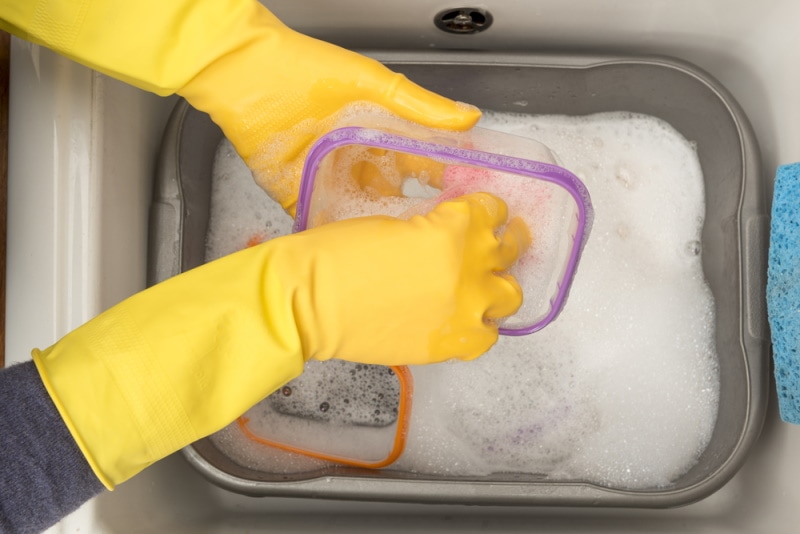
Plastic is one of the cheapest and most common synthetic materials. It’s used to make water/soda bottles, food containers, and children’s toys, to name a few. And plastic often comes with tags and labels that describe the product’s weight, dimensions, lifespan, and other factors. Now, if you’ve ever tried removing a sticker from plastic, you know how hard it is to deal with the residue.
So, how do you get it off without spending an eternity on it or hurting your fingers? Will rubbing some alcohol on the residue help, or will it make matters worse? Maybe you should go with vinegar and soapy water instead? Join us, and let’s talk about the best techniques for removing gunk from plastic!

| Time Needed | 10–20 minutes (on average) |
| Estimated Cost | $25–35 for the materials |
| Difficulty Level | Beginner level |
Before You Begin: Getting Everything Ready
Sticky residue can be removed in more than one way. Alcohol, soapy water, vinegar, and various oils all do a great job of getting it off the plastic/other surfaces. So, depending on how you want to handle it, you’ll need a different set of things. In any case, we recommend putting a pair of gloves on and making sure you have enough towels and rags to wipe off the adhesive.
- Rubbing alcohol or vodka
- Plastic scraping tool
- Standard hair dryer
- Set of gloves
- Paper towels, rags, and cloth
- Bucket of warm soapy water
- Vinegar/nail polish remover
- Olive/lemon essential oil
The 7 Steps to Get Sticky Residue off Plastic
1. Use Rubbing Alcohol
If you’re dealing with stubborn residue, rubbing alcohol will be just the right “tool” for it. Based on ethanol or isopropyl, rubbing alcohol is available at stores like Wal-Mart, Target, and Home Depot. Known as the surgical spirit in the UK, it’s mostly used as an antiseptic, disinfectant, and bug repellant. But it’s also very strong against stains and residue on plastic, glass, and wood.
Start by removing the sticker (with a plastic scraping tool). Next, put a clean paper towel in a bucket of rubbing alcohol. Once it soaks it in, put the towel over the adhesive. The liquid won’t need much time to get the job done: ten minutes max. Wipe away the sticky residue with the same towel and have another go at it with a damp rag or cloth. Oh, and vodka works as well.
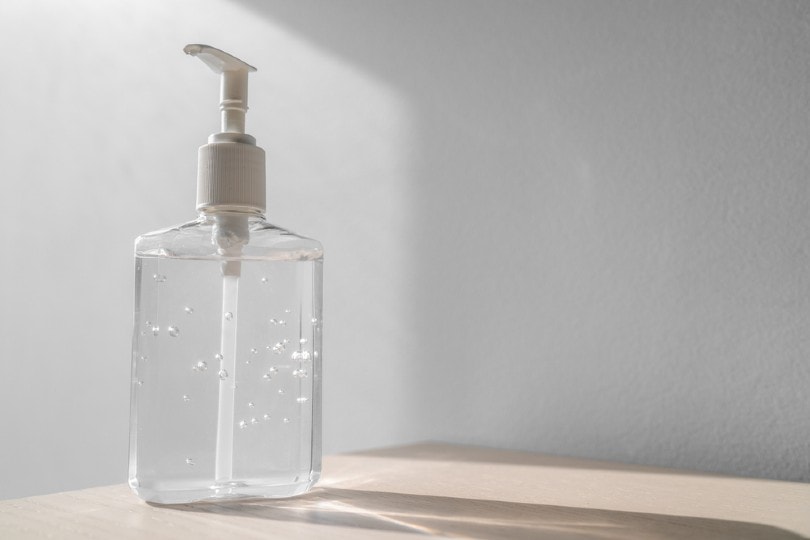
2. Go With White Vinegar
Vinegar is another folk remedy against sticky residue. The vinegar that we keep around the kitchen is 90–95% water and only 5–10% acid. But that’s enough not only for adding a lovely flavor to your favorite dishes but for dissolving residue on plastic and other materials as well. It’s also effective against stains and is often regarded as a universal cleaning solution.
The approach is the same as with rubbing alcohol. First, peel off as much of the residue as you can, and then soak a rag in vinegar. The next step is simple: put the towel around the sticker (or, rather, press it firmly against it) and give it some time (5–10 minutes) to deal with the glue. Finish up by wiping the plastic with a damp cloth. Nail polish remover is a decent alternative, but not for all plastics.
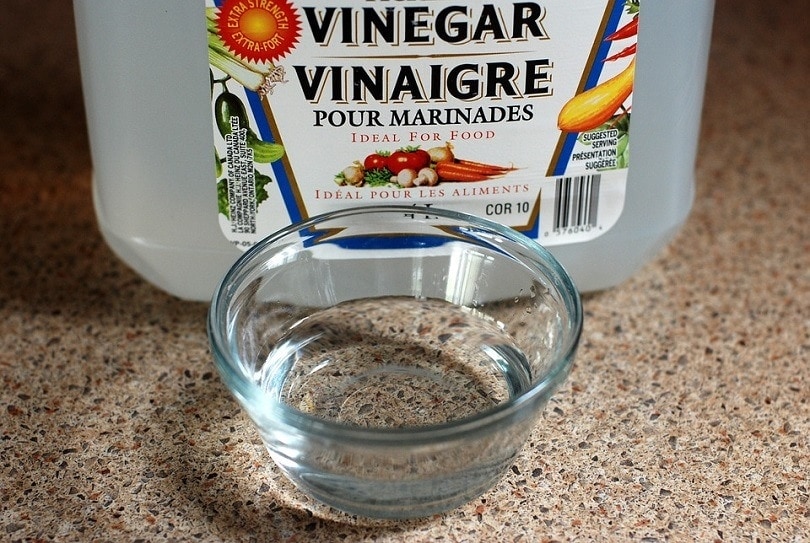
3. Put Soapy Water to Good Use
This is the cheapest solution to a sticky problem. Water and soap are 100% safe to use on plastic, and it will take you less than five minutes to make a soapy water mix. Grab a bowl and put a couple of drops of liquid soap or dishwasher there. Then, add enough lukewarm or warm water to fill the bowl. You can use a bucket or the kitchen sink instead. Now just put the plastic into the water.
A quick note: phones, tablets, or any other gadgets with electronic components are off the limits. So, if you’ve got sticky residue on an iPhone or a Nintendo Switch, clean it with a towel soaked in soapy water instead. Bottles, containers, and toys are safe, though. The sticker will start softening in 15–20 minutes. Afterward, use a scraping tool or a plastic card to remove whatever’s left. A toothbrush will also do.
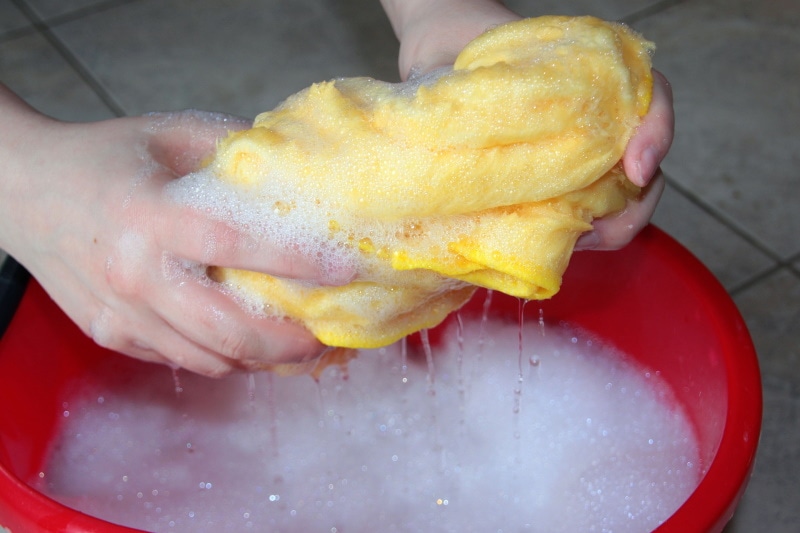
4. How About Olive Oil?
If you don’t have any alcohol or vinegar around and soapy water is failing at dealing with the sticker residue, olive oil might help. The one thing to keep in mind is that olive oil is absorbed by certain plastics and leaves a bad stain on the surface. Go slow and make sure it’s safe to use. The steps here are the same as before: we remove the sticker with our fingers or a scraper and soak a towel/rag in the oil.
As soon as the towel gets nice and wet, scrub the adhesive away. Olive oil works great with soapy water and baking soda. Together, they’re capable of handling hard-to-remove gunk. Lemon essential oil is a great alternative to olive oil, by the way, just like coconut, avocado, sunflower, and canola oil. In fact, most natural oils have a fine record of breaking down adhesive residue.
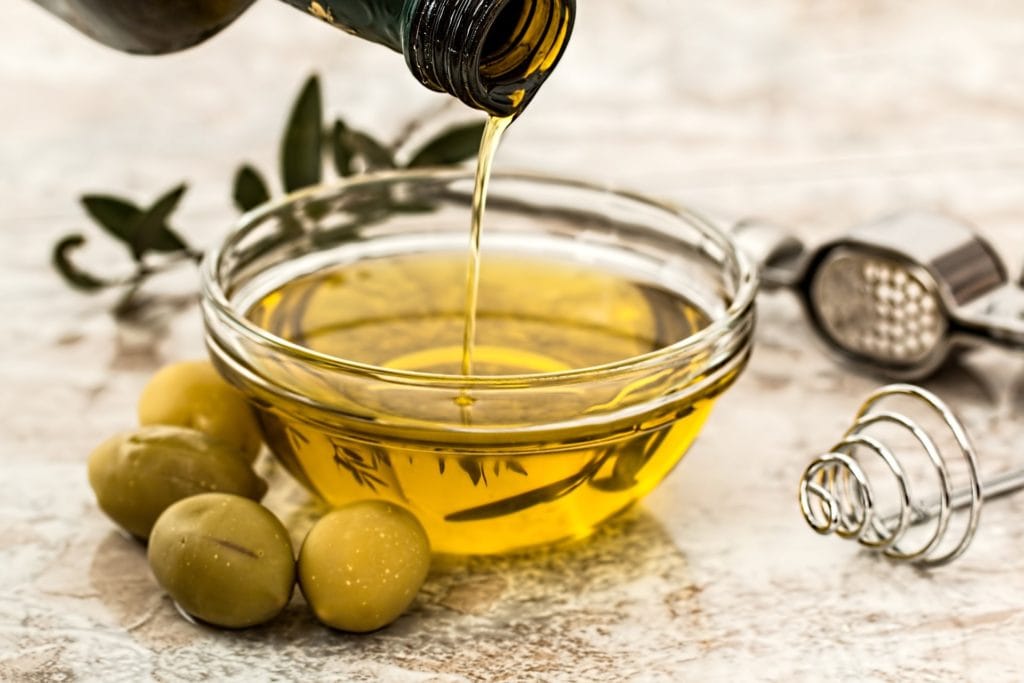
5. The Hair Dryer Technique
Alright, now let’s bring the heavy artillery in. Hair dryers generate heat, which, in turn, can remove the glue. Or, at the very least, it will loosen it up a bit. Fire up the dryer, point it directly at the sticker (or, rather, what’s left of it) and heat it for 20–30 seconds. If you do that for one or two minutes, you might damage the plastic. The reason is: hair dryers reach 140 degrees F.
That’s bad news for most plastics. Go ahead and try to remove the sticker in one go with your fingers or a scraper. If it comes off, our work is done here. If not, a damp towel/rag will do the trick. Or you can go at it with the dryer first and then use vodka, coconut oil, or soda to deal with the residue.
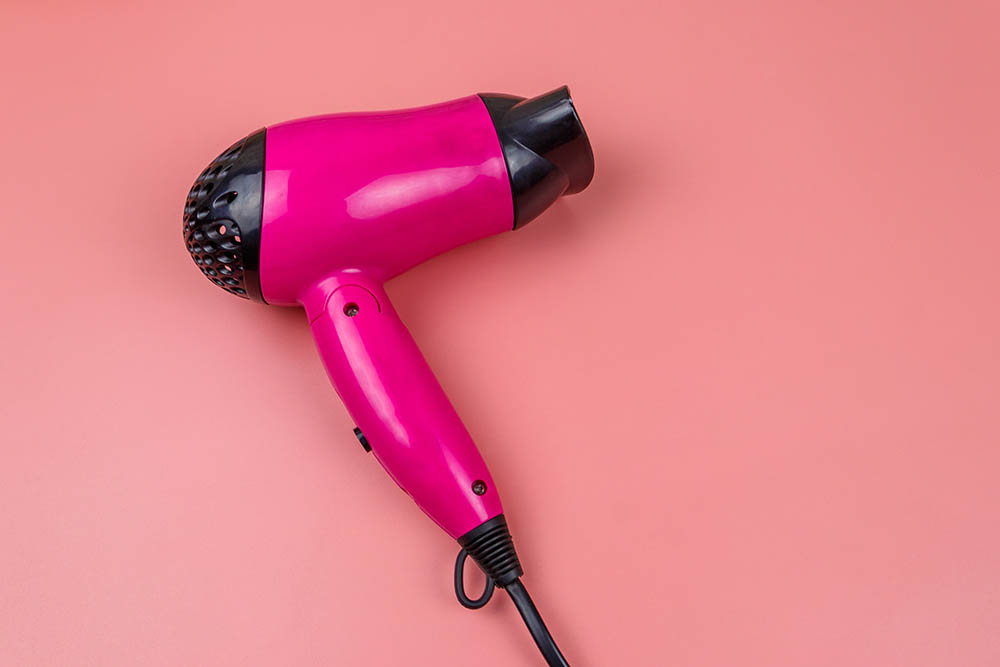
6. Commercial Cleaners
There are lots of commercial products on the market that are specifically formulated with adhesives in mind. Does that mean they’re better than vinegar, oil, or other products we just covered? Well, not quite. While they are, indeed, quite efficient and make short work of adhesive gunk, you won’t see a big difference in the results.
That said, if you prefer professionally made solutions over DIY cleaning products, commercial cleaners will be a reasonable purchase. The concept is very much the same, however. You apply the formula first, let it sit for a while, and then use a rag, towel, or scraper to remove the residue. Some experts recommend using a lubricant spray like WD-40 or Goo Gone instead. Be careful not to add too much, though.
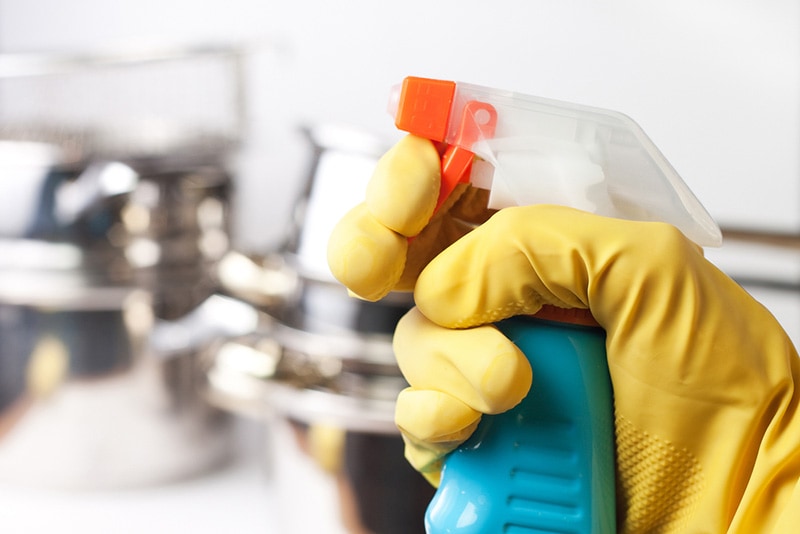
7. Masking Tape and Erasers
Wait, does it really make sense to try and “kill” glue with even more adhesive? Yes, it does! To achieve the best results, wrap a piece of masking tape on your fingers (the middle and index ones). Next, press against the residue on the plastic and pull away from it. Be very gentle and let the gunk adhere to the tape before making any sudden moves.
As for rubber erasers, they’re only effective against weak stains or residue. On the bright side, they are compatible with wood, glass, and plastic surfaces.

Can Peanut Butter Handle Sticky Residue?
This might sound a bit strange, but peanut butter is often used to remove the nasty residue from plastic. Does it work, though? Peanut oil is not only good for your health, but it’s also capable of breaking down glue. Once it kicks in, it will become much easier to get rid of the adhesive without damaging the surface. The same goes for mayonnaise.
Put some peanut butter over the residue, give it 5–10 minutes to do its thing, and use a dry, clean paper towel to wipe it off. If there’s still some left, use a washcloth and warm water to make the surface squeaky clean. While peanut butter isn’t as effective as vinegar or alcohol, it does work. It can also help hide scratches, lubricate hinges, and serve as mouse bait.
Can Hot Water or Vinegar Damage the Plastic?
The short answer is no. There are dozens of different plastic types on the market, and most are heat-resistant with a melting point of 212°F/100°C. So, while it’s not recommended to put plastic bottles and containers into a fire (as that will release toxins into the air), a little bit of hot water won’t be a problem. Besides, to successfully remove sticky residue, the water doesn’t have to be very hot.
The same is true if you’re using white vinegar. The plastic that’s used in coffee makers, microwave ovens, blenders, and other appliances is highly resistant to vinegar. As long as you don’t wipe the rubber or metallic parts with it—which can lead to corrosion—you won’t have to worry about anything.

Conclusion
Sticky residue on plastic can be more than a nuisance, especially if it’s ruining your favorite miniature model, flask, gadget, or kitchen appliance. Thankfully, it’s not that hard to remove it if you know what to do. Even if there isn’t any oil or alcohol around, you can use water, soap, and vinegar. Just be a little patient, follow our instructions, and you’ll be done in no time!
Now, depending on how stubborn the glue/paper residue is, it might look like you’d be better off buying a new bottle, TV remote, or CD/DVD container (if you’re still using those). However, we’re still encouraging you to try one of the methods from our guide. We bet you’ll be impressed by the results!
- Com – What to Know About Rubbing Alcohol
- Com – White Vinegar Vs. Wine Vinegar
- Com – Why Does Water Damage your Electronics
- Rubbing-Alcohol.Com – Vodka Instead of Isopropyl Alcohol
- Com – How Hot Does a Hair Dryer Get
- SeattlePi.Com – Hot Water Melt Plastic
- Org – Things Not To Clean With Vinegar
- Com – Peanut Butter Life Hacks
- Com – Peanut Oil Health Benefits
- Com – How to Remove Sticker Residue
Featured Image Credit: photographyfirm, Shutterstock
Contents

